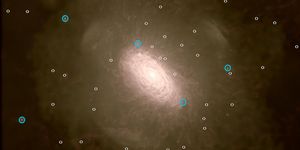NASA's Spitzer Space Telescope Celebrates 15 Years in Space
NASA engineers originally designed the Spitzer Space Telescope to observe the heavens for approximately 2.5 years. But 15 years later, the space observatory is still going strong and performing just as good as it did when it first launched.
The Spitzer Space Telescope observes the cosmos in the invisible infrared light range, which allows astronomers to see things that would usually fly under the radar. Spitzer has played a significant role in the detection and study of the TRAPPIST-1 exoplanetary system.
With the Spitzer Space Telescope being in service for as long as it has been, astronomers were handed a unique opportunity to use it beyond its original scope of intent. It was never designed with the purpose of studying distant exoplanets in mind, but it has quickly turned into an exoplanet-hunting observatory given its powerful capabilities.
Spitzer will remain in service through November of 2019, but future space observatories such as the James Webb Space Telescope will build from the incredible scientific database Spitzer helped create.








